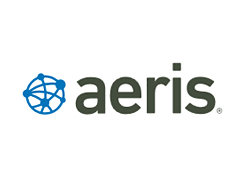Mohsen Mohseninia is vice president of market development, Europe, at Aeris, the IoT pioneer which is both a technology provider and a cellular network operator delivering comprehensive IoT/M2M services to leading brands around the world. Here, Rickard Andersson, an analyst at research firm Berg Insight, interviews Mohseninia to learn more about the company and its future direction.
Rickard Andersson: As a pioneer in the IoT market, how can Aeris help in regards to realtime data analysis?

Mohsen Mohseninia: Unlike traditional analytics, the challenge with IoT and analytics is speed. What I mean by this is the speed at which large volumes of data is provided; terabytes of data from hundreds of sensors, and the business needs to be able to digest the data, analyse the data and come up with actionable outcomes. At Aeris, we are very familiar with this challenge and have helped customers to effectively address it by utilising our elastic, cloud-based data ingestion and storage platform and subsequently applying our IoT analytics tools to gain the necessary insight.
For example, an aircraft manufacturer uses our platform to download very large volumes of data every time a plane lands. This data is processed so work orders can be generated for ground staff and so that the plane can be maintained and made ready to fly again. Using this solution has reduced the amount of time the planes are on the tarmac and hence improved the efficiency of their product – the plane. This has resulted in increased flying hours for the planes which is a key differentiator for the brand and its products as well as an obvious benefit for its airline customers.
RA: How does Aeris help manage connectivity costs?
MM: It is vital for the charges to be transparent. The transformation that IoT brings is a move from capex to opex, with everything as a service. If an enterprise is operating in that paradigm, having a fixed cost that it is not generating revenue from that model would be fatal. For example, Aeris has customers in the combine harvester market. These customers only operate from April to October, so while Aeris could say that is their problem and charge an annual fee for using the services, we instead understand their model is seasonal.
Therefore, we have built our billing model so we charge them only when they make money. Parked combine harvesters do not make money so, when they are not working, customers are not being charged. It is fundamental to be able to support your customers’ business model fully, not just in words. The only way we succeed is if our customers succeed. That is fundamental to the opex model.
Aeris’ role is to act as a partner that can help enterprises on the journey from being businesses that provide unconnected products to businesses that provide connected services. Our technology helps fundamentally transform business models and the customer experiences delivered.
RA: How can players such as Aeris ensure security for their customers?
MM: It is important to note that security risks can be recognised and understood, detected and resolved, managed and controlled, but never completely eliminated. To mitigate risk, one of the first steps that every manufacturer of an IoTenabled device must take is to consider the potential impact that a data breach would have. For IoT devices that have the potential to cause human fatality or a dramatic financial loss, the manufacturer must implement the most stringent levels of security.
For example, a medical firm developing a healthcare device or a manufacturer of an autonomous vehicle must deploy the highest levels of protection. It is vital to ensure that the only people who are able to change IoT device configurations are those authorised to do so. Your connectivity provider also should have the ability to limit the services to those that are actually required by the device.
If the device is intended to receive messages, and not send them, then your provider needs to have a method of blocking messages sent by the device or voice calls. This is important not only from a security perspective but from a cost perspective as well. The SIM also should be configured so it can receive over-the-air updates to keep up with new and emerging threats. In the context of customer security, it is worth highlighting that Aeris’ network is a closed network.
What that means is no device on the network can be contacted directly by any other device outside of the network. The only communication the device is allowed to make is with the application that requires that data. The devices thus cannot be spoofed or spammed, hence protecting them from malicious access which provides the users with a further degree of protection.










